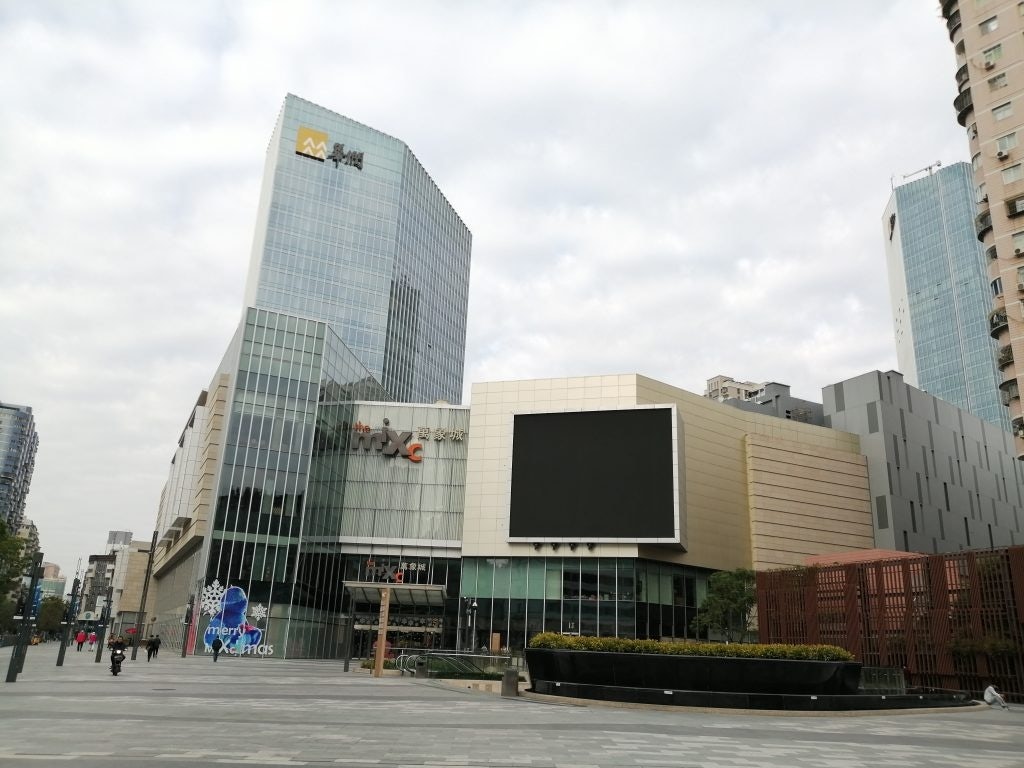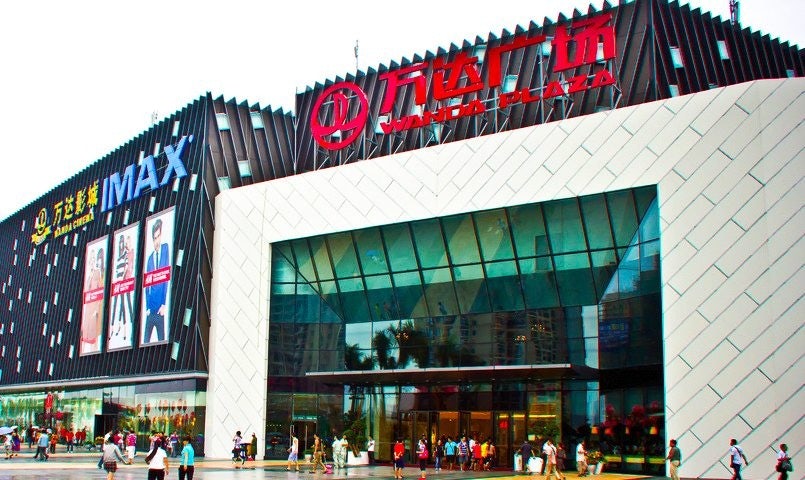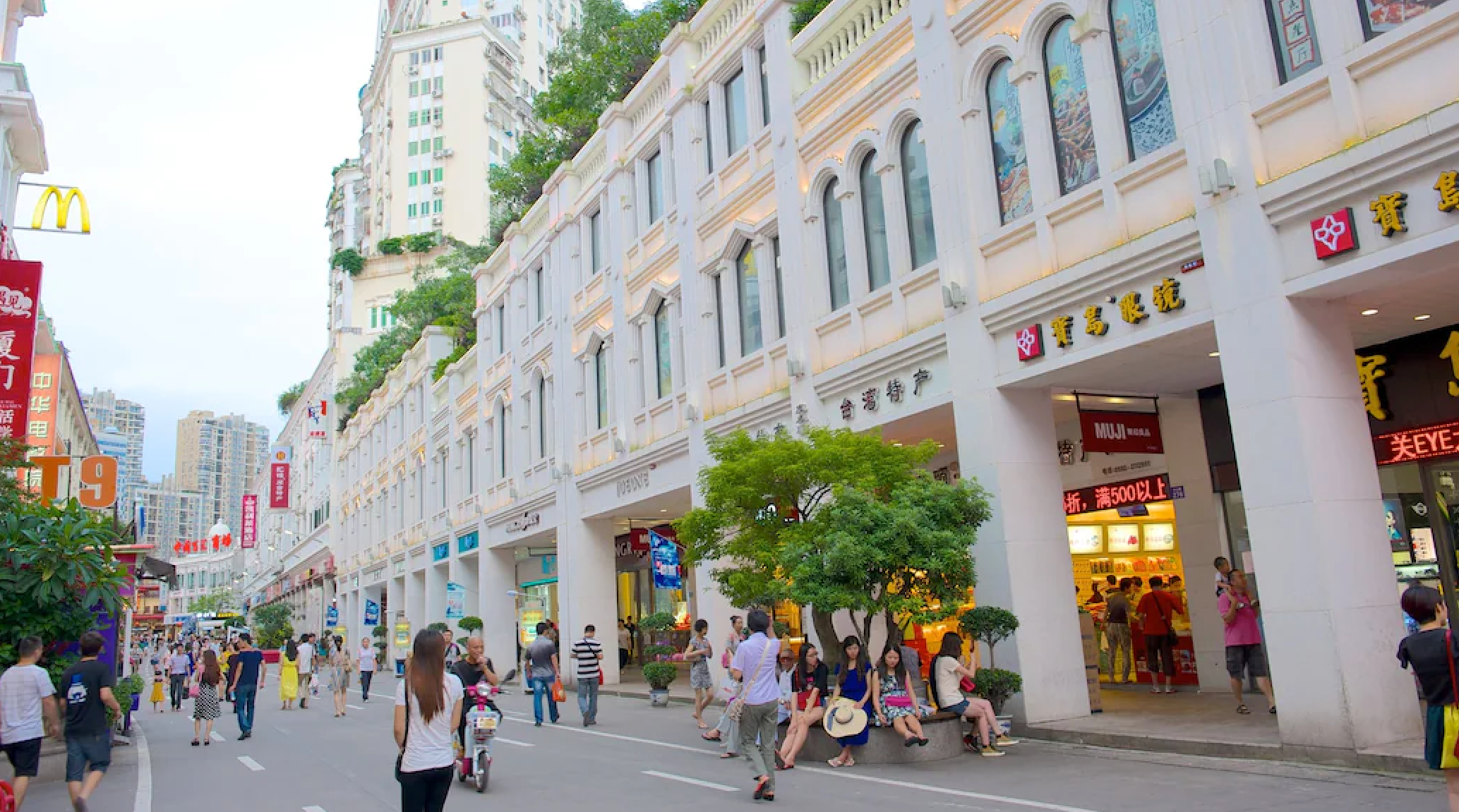Xiamen, China — scenic vistas, white sandy beaches, and an easygoing coastal lifestyle are just part of the appeal of the seaside city. Located in Fujian province, Xiamen has been a key import and export hub since the 1500s, and has become even more vital since its allocation as one of the country’s first four special economic zones. Recent years have also invited a steady flow of creatives: young folk looking to leave the chaos and competition of Shanghai and Beijing in favor of the slowed down, port-city lifestyle.
It’s no wonder many of China’s top designers are putting down roots in Xiamen, from Sankuanz to Ms. Min, Mymymy, Deepmoss, and Vega Wang. The city’s laid-back rhythm allows “young designers a more relaxed environment to build their work at their own pace, with less pressure and competition,” Chen Liang, Managing Director at éCLAIR Asia, explains.
Not only does Xiamen boast a thriving cache of artists, but the area also houses big-name luxury players scattered across its high-end malls and retail centers. In the first half of 2022 alone, 51 first stores were built in the city including womenswear lines like Amykiky, Vov, and Comme Moi.
With the local government pushing fashion-forward initiatives (such as reduced studio and operational costs), luxury malls expanding their reach, and an average disposable income here ranking in China’s top 10, Xiamen’s retail future is certainly adding up. Combine that with the city’s resort tourism allure and plans to develop the area as an international consumption destination — and Xiamen might just prove to be China’s new fashion capital.
Key takeaways#
- Many of the mainland’s best young designers call Xiamen home — attracted by the relatively low costs of operating here, relaxed lifestyle, and proximity to the southern textile belt. The area is also less brand-saturated than Shanghai and Beijing, allowing Gen Z creatives to put down roots as they find their consumer sweet spot.
- The city is on the smaller side at 5.28 million strong but is ranked 9th in highest per capita disposable income, making it a perfect landing spot to reach shoppers.
- Xiamen is already an established resort destination. Residential KOLs help to spotlight the southeastern city as a luxury travel experience — or during the pandemic, a welcome escape from city lockdowns. A shift from luxury travel destination to luxury retail hub seems like the next natural step.
Key statistics#
GDP#
- $109.027 billion (703.389 billion RMB) in 2021, a 10.18 percent year-on-year increase
- Out of all sub-provincial cities, Xiamen's economic growth rate has maintained first place for two consecutive years, surpassing that of Xi'an, Nanjing, and Hangzhou (2021)
Wealthy population#
- Ranked No. 11 in the nation for producing rich individuals (Hurun Wealth Report 2020)
- City with the densest distribution of wealthy people in Fujian province (Hurun Wealth Report 2021)
Average disposable income#
- $8,623 (58,140 RMB) per capita disposable income (2021)
- 9th highest per capita disposable income among major Chinese cities (2021)
Retail snapshot#
MixC City#

In 2018, MixC opened its mall on the scenic Xiamen Island, complete with subway system connectivity, brightly lit LED screens and graphic panels, and over 270 retail stores across over 46,451 square meters (500,000 square feet). In 2020, it achieved a stunning revenue of $590.54 billion (4 billion RMB) and reached an annual turnover of $885.8 billion (6 billion RMB) in 2021. MixC is host to more than 40 international luxury houses including Bulgari, Louis Vuitton, Cartier, Gucci, Rolex, and Hermès. As one of Xiamen’s premier luxury retail malls, it has a strong reputation as a go-to source for high-end products — an ideal ecosystem for more labels to develop in.
Paragon Center#

Paragon Center debuted in 2009 as Fujian province’s first high-end comprehensive retail experience. With the motto “only for quality life,” the center reopened in 2016 (after three years of renovations) to welcome in a tide of luxury groups, alongside a cinema, supermarket, restaurants, and other services characteristic of an international shopping center.
Paragon’s list of names includes Burberry, Ermenegildo Zegna, Gucci, Armani, and Michael Kors. Though not as large as MixC, it offers an all-around experience of luxury — from quality service to a range of centralized commercial offerings. Additionally, the center hosts a range of events throughout the year such as a Christmas lighting ceremony.
Huli Wanda Plaza Shopping Center#

Located in Xiamen’s Huli district, the city’s first Wanda Plaza commercial center opened in September 2011. Across a sprawling 530,000 square meters (5704872 square feet), the complex fuses a large shopping mall with outdoor street retail, a five-star hotel, office space, and apartments, resulting in a fully independent commercial zone complete with stores, restaurants, leisure, and entertainment.
For residents, the Huli Wanda is the go-to for international brand staples like Nike, Adidas, Umbro, Uniqlo, Zara, and H&M. The plaza’s significant consumer base (drawn there in part because of its popular dining options) can be thought of as the average Xiamen resident. Additional companies looking to enter the foray can count on widespread exposure to the city’s range of citizens.
Xiamen's future as a retail hotspot#
For established firms hoping to get in touch with Gen Z, Xiamen offers a fresh and open-minded local culture that is a big draw for young people. And for up-and-coming designers, the city boasts the irresistible combination of cheaper operation costs and vast creative freedom. Popular domestic designers like Sankuanz and Ms. Min were early pioneers who landed there and put it on the map.
And for the average Xiamen resident? Well, the city has undoubtedly “shown great potential to consume luxury products,”argues Kejie Yi, Market Researcher at China Marketing Insights. The saying goes that though it is a second-tier city, housing prices — and certainly per capita average disposable income — are catching up with those in first-tier cities. For Yi, all signs point straight ahead: to “delivering the message that Xiamen is ready for luxury brands to land.”
